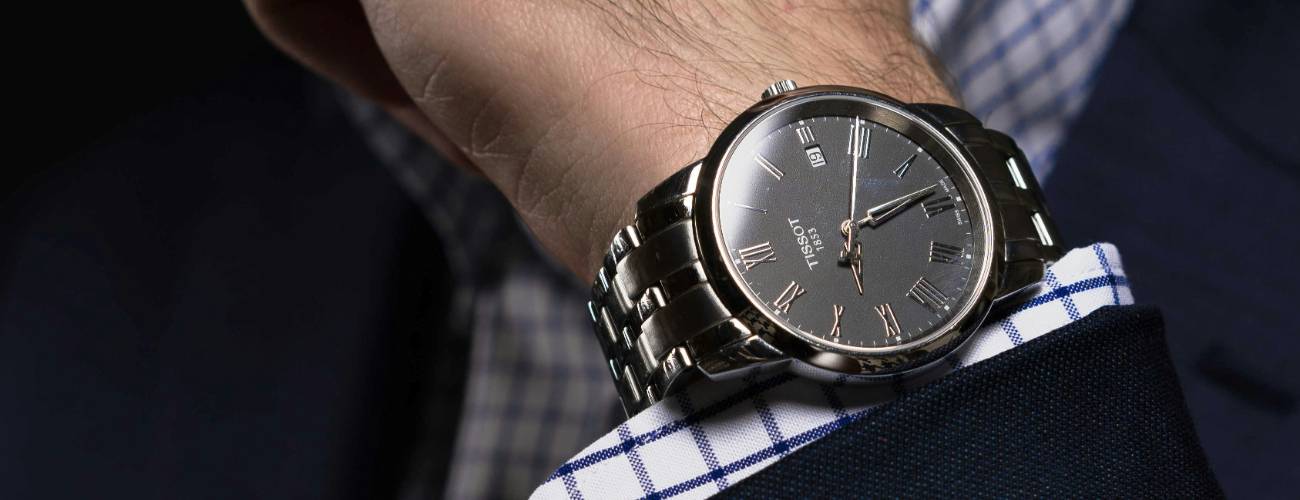How Long Does PVD Coating Last On Watches?
Physical Vapour Deposition, commonly known as PVD coating, is a state-of-the-art technology used for enhancing the durability and appearance of watches. This process involves the deposition of thin layers of material on the surface of the watch case, bracelet, or dial, providing a hard-wearing finish with a variety of colour options. The longevity of PVD coatings on watches is influenced by several factors, including the quality of the coating process, thickness of the layer applied, and the type of material used as a substrate.
What Is PVD Coating?
PVD coating is a vital process for enhancing the durability and aesthetics of your watch. It offers superior wear resistance compared to other methods.
PVD is a chemical process that involves using near-microscopic level particles to bind the surface of a solid material. The result of PVD coating is a thin black or another colour layer, usually a few micrometres thick (which is usually between 0.2 to 5.0 micrometres) on the top of the material chosen to be coated. The particles used for PVD coating vary and are based on the desired outcome of the manufacturer.
Steel is the most common material subjected to PVD coating. However, virtually any solid material that can withstand the binding process can be PVD-coated. Another popular material that manufacturers commonly choose to coat is titanium. This is because it’s lightweight. On watches, PVD coating gives a sporty, robust, unique look, in addition to making the watch more resistant to external degrading factors.

So, if you want to value your watch, and it has PVD coating, bear in mind that it can be relatively more expensive than watches that don’t have PVD coating, as it’s is a costly process. The most common colours of PVD-coated watches are black and gold. Of course, watch manufacturers can choose to manipulate the final product’s colour as they desire. PVD coating is mostly done on the watch case, i.e., what houses the engine and watch movement. It is also done on the strap and sometimes bracelets.
💡 PVD coating is sometimes confused with another similar process known as Diamond-like Carbon (DLC). They are not the same as DLC is the process of bombarding carbon atoms at a certain energy onto a material of choice to form a diamond-like dense film. It is confused with PVD because the same PVD coating process often achieves DLC.
How Watches Are PVD-Coated
Physical Vapour Deposition (PVD) is a technique used to coat materials with a thin, robust layer. During the process, the material to be coated is placed in a vacuum chamber. A target material, or ‘sputtering material’, is then vaporised in this vacuum using either a high-energy beam of electrons or by introducing a gas, which ignites a plasma that emits ions to bombard the target. This action results in atoms from the target material accumulating on the substrate, creating a thin and even layer.
⌚️ You might like this guide: Does Rolex Use PVD Coating?
Advantages Over Other Coatings
PVD coating offers several benefits over traditional coating techniques:
- Durability: It creates a hard-wearing coat that can endure daily wear and tear.
- Corrosion Resistance: This layer offers increased protection against corrosion, which is crucial for the longevity of your watch.
- Aesthetics: PVD coatings can provide a range of colours without affecting the substrate’s properties or dimensions.
- Environmentally Friendly: The PVD process is a more environmentally friendly option, as it doesn’t generate the hazardous chemicals that some traditional coatings do.
How Long Does PVD Coating Last?
PVD coating enhances the durability and appearance of watches. Its life expectancy varies based on specific factors and maintenance.
Factors Affecting Longevity
- Material Quality: High-grade PVD coatings tend to last longer. Inferior materials can degrade more quickly.
- Thickness of Coating: Generally, thicker coatings endure longer, protecting the watch from scratches and wear.
- Usage Habits: Frequent exposure to harsh conditions can reduce the coating’s lifespan.
- Maintenance: Regular cleaning and careful handling prolong the lifespan.
- Environmental Conditions: Exposure to extreme temperatures, UV light, and corrosive substances can accelerate wear.
Expected Lifespan Range
- Standard Use: For typical daily wear, PVD coatings can last between 1 to 3 years before showing signs of wear.
- Gentle Use: With careful maintenance and infrequent exposure to harsh conditions, the coating may last upwards of 5 years.

Maintenance and Care
Proper maintenance and wristwatch care are crucial to maximising the durability of the PVD coating on your watch. By following specific guidelines, you can ensure that the aesthetical appeal and protection provided by the coating last longer.
Regular Cleaning
It is essential that you clean your watch regularly to maintain the PVD coating’s lustre. Use a soft, lint-free cloth for wiping down the surface. For more thorough cleaning, it’s advisable to use a mild soap and warm water, followed by a rinse with clean water to remove any soap residue. Be sure to dry your watch completely with a dry cloth.
Do:
-
- Use a soft cloth
- Clean with mild soap and warm water if necessary
- Dry thoroughly
Don’t:
-
- Use abrasive materials
- Immerse completely in water if your watch isn’t water-resistant
Avoidance of Harsh Conditions
Exposing your watch to harsh conditions can prematurely wear down the PVD coating. Avoid contact with chemicals like solvents, which can corrode the coating. Also, extreme temperatures and abrasive environments should be avoided to prevent any potential damage.
Avoid:
-
- Chemical exposure, e.g., solvents, chlorine
- Extreme temperatures
- Abrasive environments, e.g., sandpaper, abrasive cleaners
By adhering to these care instructions, you extend the lifespan of your watch’s PVD coating. Regular cleaning and avoidance of harsh conditions are simple yet effective practices for maintaining your watch’s appearance and functionality.
⌚️ Read more: Must-Have Items In Your Watch Cleaning Box.
Frequently Asked Questions
When it comes to PVD coating on watches, you might be curious about its durability and performance over time. Below, you’ll find answers to common queries that will offer valuable insights into the longevity of PVD coatings on wristwatches.
What is the typical lifespan of a PVD coating on wristwatches?
The typical lifespan of a PVD coating on wristwatches ranges from a few years up to 20 years. This duration depends on the thickness of the coating, the quality of the application process, and how the watch is used and maintained.
Can PVD-coated gold watches retain their lustre over time?
Yes, PVD-coated gold watches can retain their lustre over time. PVD coatings are known for their ability to maintain colour and shine, provided the watch is cared for properly and not exposed to harsh conditions.
How resistant is PVD gold plating to scratching?
PVD gold plating is more resistant to scratching than traditional gold plating methods. It bonds the coating at a molecular level, which creates a tougher surface. However, it is not completely immune to scratches, especially under rough handling.
What factors can affect the durability of PVD coatings on timepieces?
Factors that can affect the durability of PVD coatings include exposure to abrasive substances, harsh chemicals, excessive moisture, and significant temperature variations. Proper maintenance and care are essential for preserving the integrity of the coating.
Is it common for PVD coatings on watches to become tarnished or discoloured?
It is not common for PVD coatings on watches to become tarnished or discoloured. PVD coatings are applied using processes that create a stable and strong bond, thus ensuring colour retention even with regular use. However, under extreme conditions discoloration can occur.
How does the wear and tear typically influence the longevity of PVD coatings in watches?
The wear and tear typically seen in everyday use can gradually wear down PVD coatings, affecting their longevity. Regular contact with hard surfaces, friction, and impacts can eventually lead to visible wear. However, this process is usually slow, and the coating remains intact for many years with normal usage.

